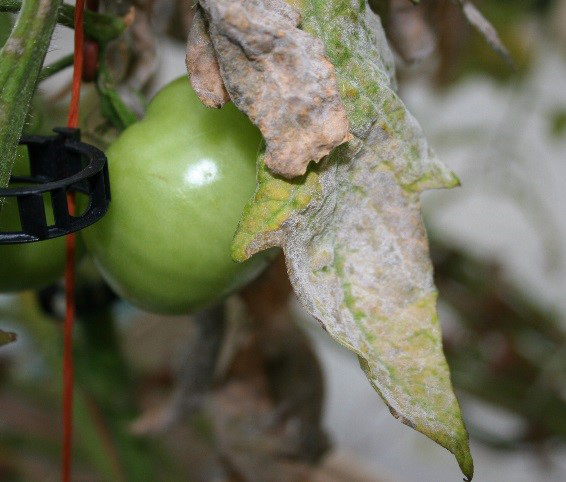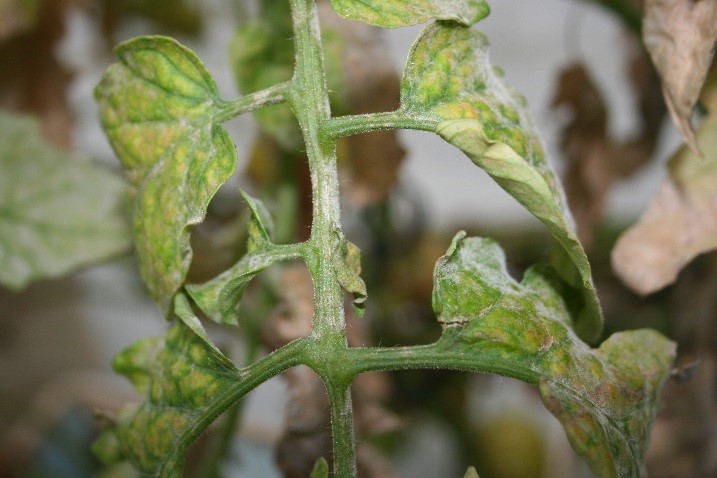Powdery Mildew
Return to Diseases
Powdery mildew (various species) affects nearly all vegetable crops, yet the causal fungus usually differs by plant host. Co-occurrence on multiple greenhouse crops occurs because the disease is benefited by high humidity, but low free water on plant surfaces, and sometimes low light conditions. This disease is characterized by the presence of a white powdery fungal growth appearing on upper and lower leaf surfaces, as well as stems and petioles. Over time, necrotic areas form, resulting in blighting of affected leaves which may also curl. While powdery mildew rarely affects vegetable fruit directly, it can significantly reduce yields due to lowered rates of photosynthesis in leaves.
Powdery mildew on tomato foliage.
(Photo: Kenneth Seebold, University of Kentucky)

Powdery mildew on tomato foliage.
(Photo: Emily Pfeufer, University of Kentucky)

Powdery mildew on tomato petiole.
(Photo: Emily Pfeufer, University of Kentucky)
Management:
- Increase air flow within structures and decrease humidity.
- Apply labeled fungicides on a regular schedule.
